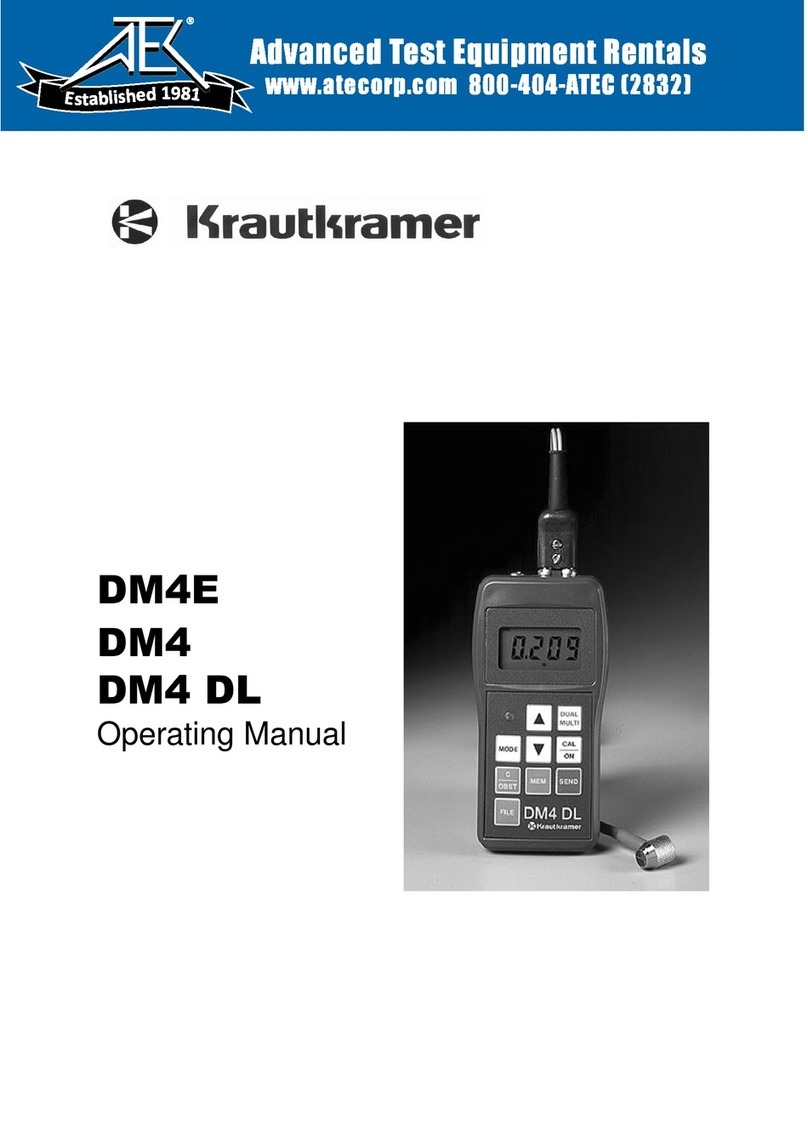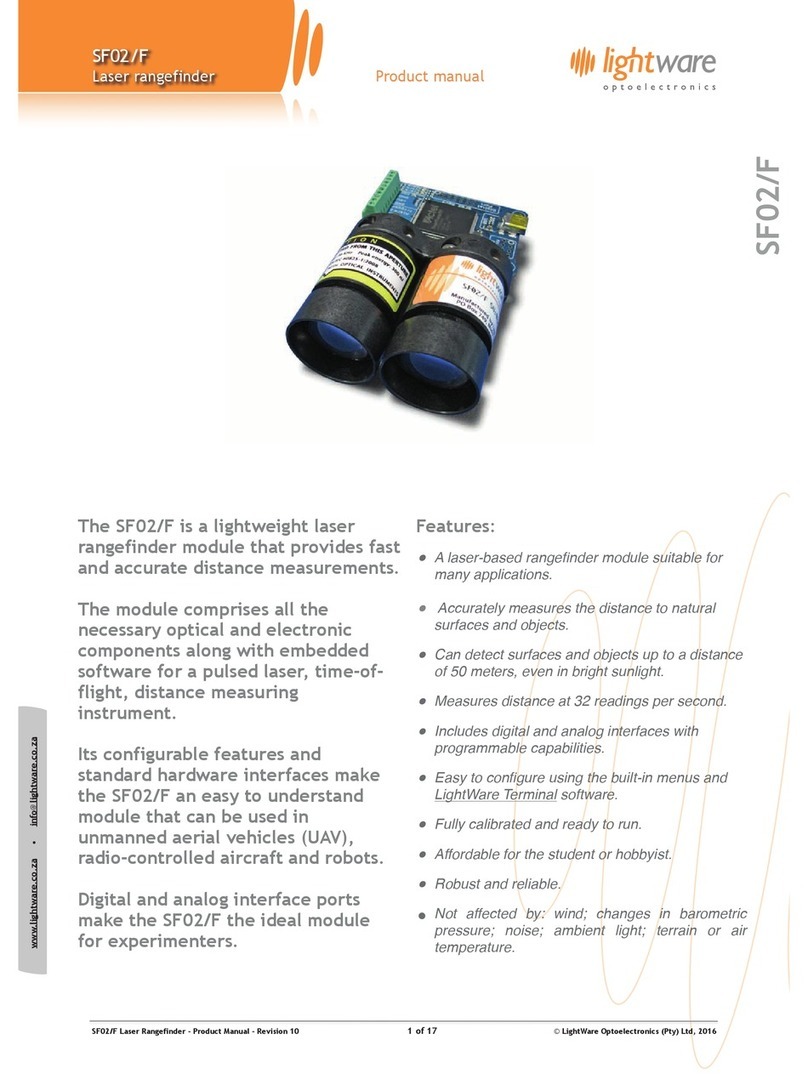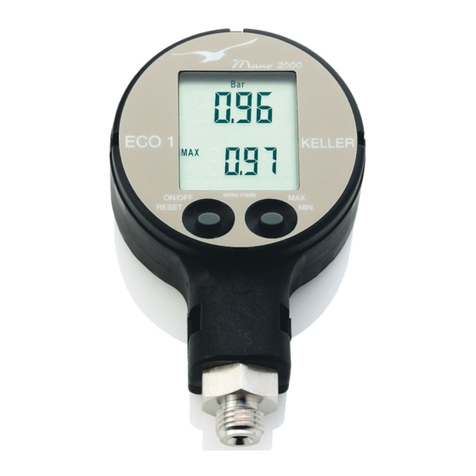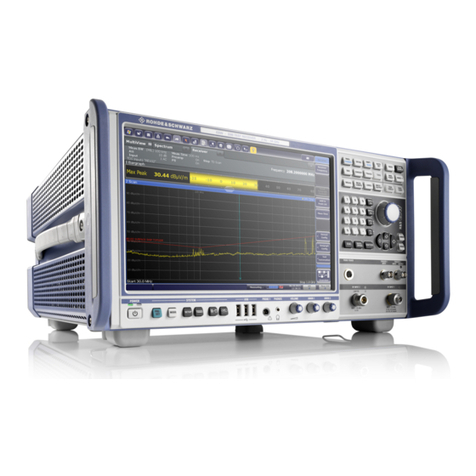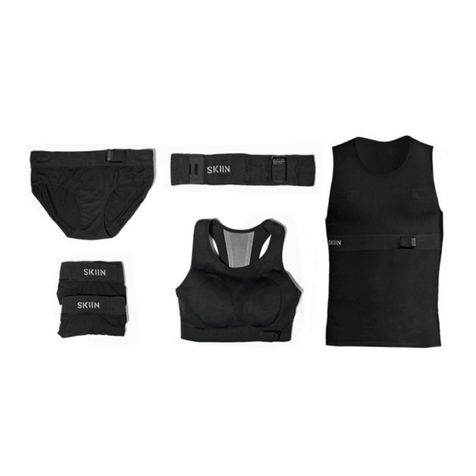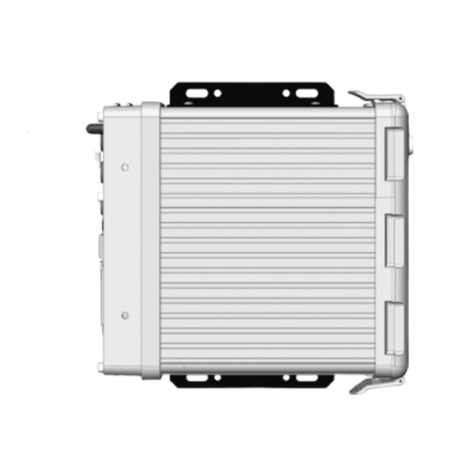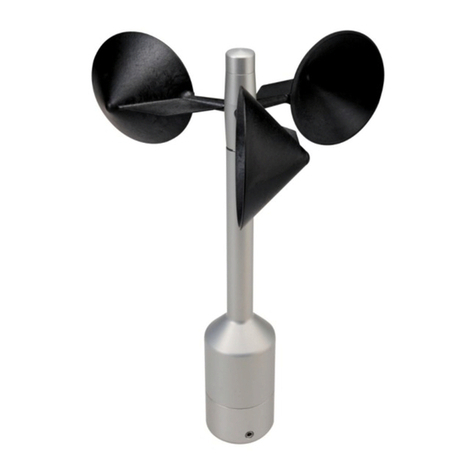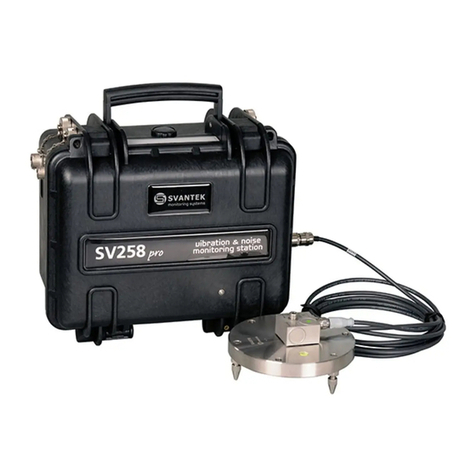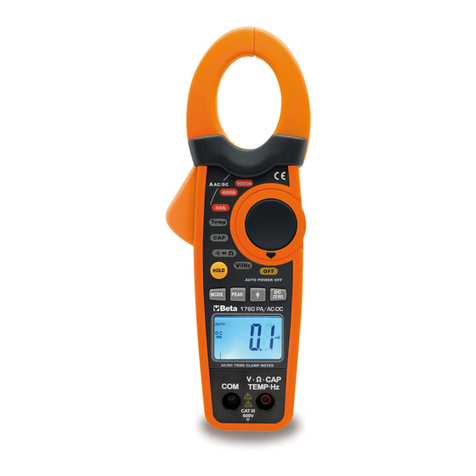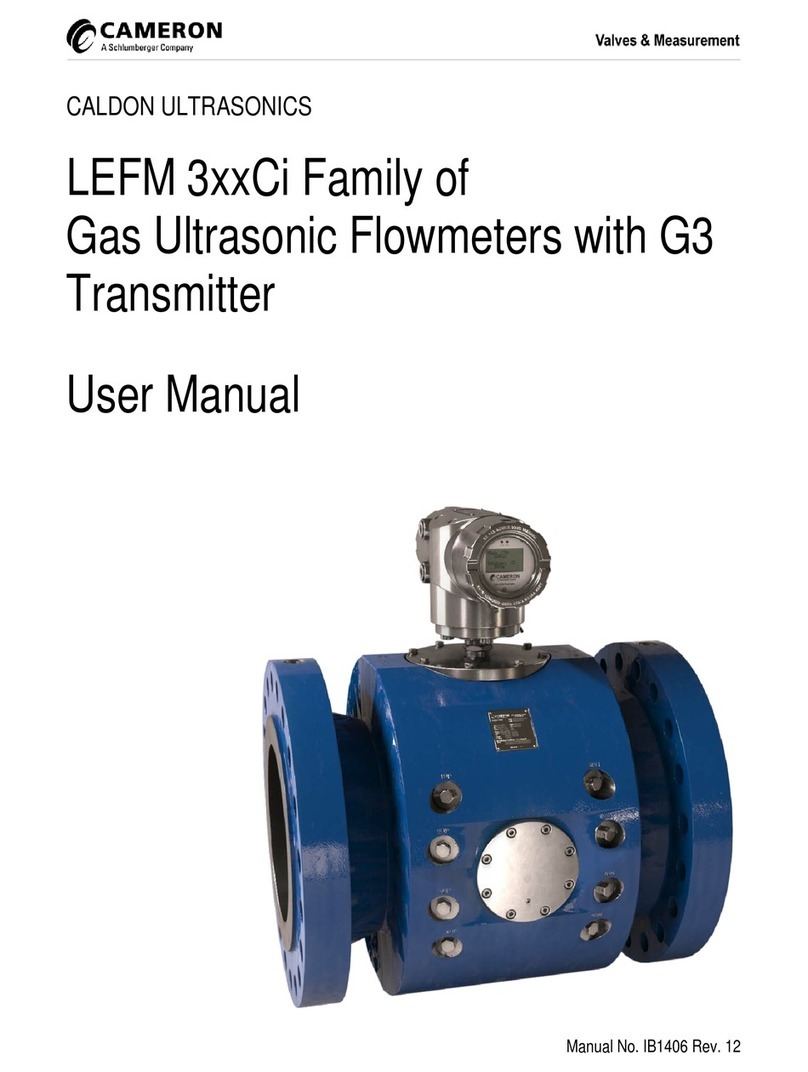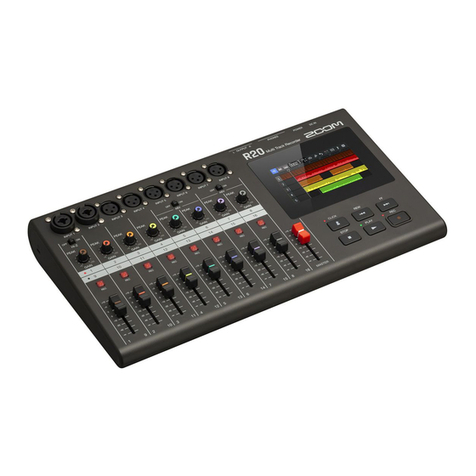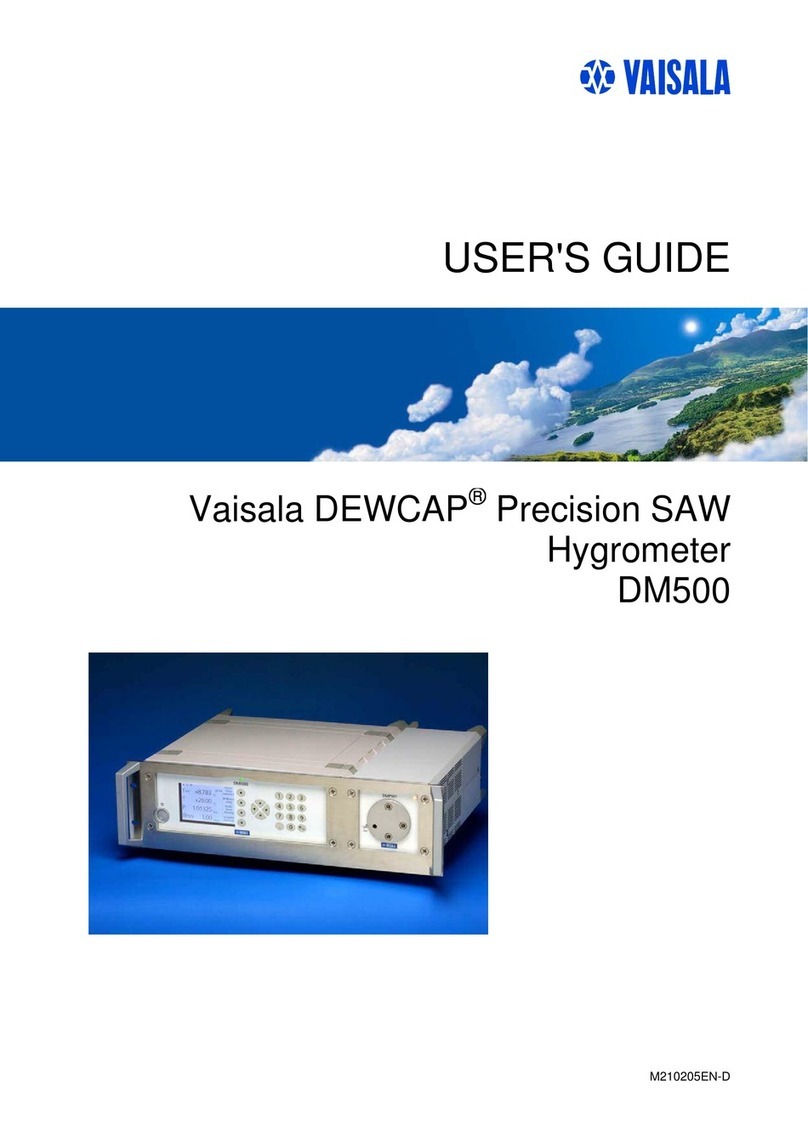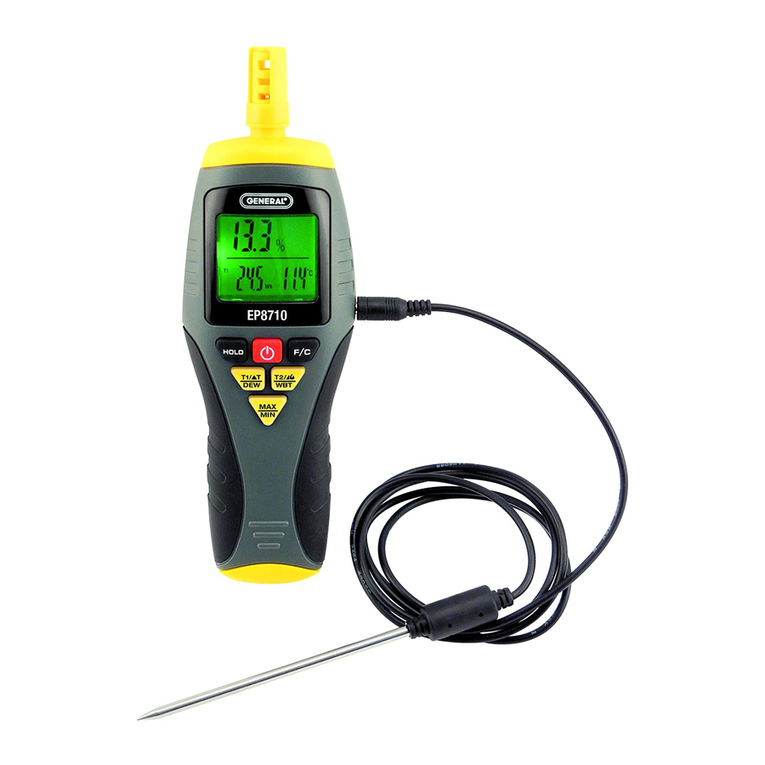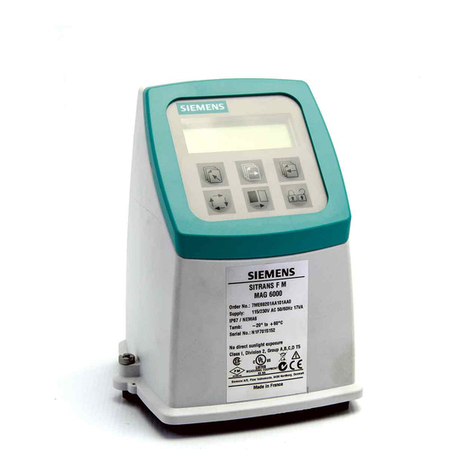Krautkramer DM4 User manual

Krautkramer DM4E / DM4 / DM4 DL Issue 05, 01/01 0-3
Content
1 Introduction ...................................... 1 -1
1.1 DM4E, DM4 and DM4 DL ........................ 1 -2
1.2 Information about this manual .............. 1 -5
1.3 Layout and presentation
of this manual......................................... 1 -6
1.4 Important remarks
about thickness testing ......................... 1 -7
Conditions for application of
ultrasonic thickness gauges ..................... 1 -7
Operatortraining ...................................... 1 -8
Limits of ultrasonic testing ........................ 1 -8
Ultrasonic thickness measurement........... 1 -9
Influence of the test material .................... 1 -9
1.5 Important notes on
thickness testing with the DM4 ........... 1 -11
Probe Zero Adjustment........................... 1 -11
Couplant rests ........................................ 1 -12
Measurement precision .......................... 1 -12
Probes.................................................... 1 -12
DM4 DL Data Logger ............................. 1 -13
2 Scope of supply and accessories... 2 -1
2.1 Scope of delivery .................................... 2 -3
2.2 Required accessories ............................. 2 -4
2.3 Recommendedaccessories ................... 2 -4
2.4 Recommendedoutside products ........... 2 -6
3 Preparation for operation ................ 3 -1
3.1 Batterysupply ......................................... 3 -2
Inserting batteries ..................................... 3 -2
3.2 Connecting the probe ............................. 3 -4
4 Basics of operation .......................... 4 -1
4.1 Display..................................................... 4 -2
Displayindications.................................... 4 -2
4.2 Keys ......................................................... 4 -4
4.3 Switching the instrument on and off ..... 4 -5
Indications after switching on.................... 4 -5
Dialogprobes............................................ 4 -5
Krautkramer DM4E / DM4 / DM4 DL Issue 05, 01/01 0-3
Content
1 Introduction ...................................... 1 -1
1.1 DM4E, DM4 and DM4 DL ........................ 1 -2
1.2 Information about this manual .............. 1 -5
1.3 Layout and presentation
of this manual......................................... 1 -6
1.4 Important remarks
about thickness testing ......................... 1 -7
Conditions for application of
ultrasonic thickness gauges ..................... 1 -7
Operatortraining ...................................... 1 -8
Limits of ultrasonic testing ........................ 1 -8
Ultrasonic thickness measurement........... 1 -9
Influence of the test material .................... 1 -9
1.5 Important notes on
thickness testing with the DM4 ........... 1 -11
Probe Zero Adjustment........................... 1 -11
Couplant rests ........................................ 1 -12
Measurement precision .......................... 1 -12
Probes.................................................... 1 -12
DM4 DL Data Logger ............................. 1 -13
2 Scope of supply and accessories... 2 -1
2.1 Scope of delivery .................................... 2 -3
2.2 Required accessories ............................. 2 -4
2.3 Recommendedaccessories ................... 2 -4
2.4 Recommendedoutside products ........... 2 -6
3 Preparation for operation ................ 3 -1
3.1 Batterysupply ......................................... 3 -2
Inserting batteries ..................................... 3 -2
3.2 Connecting the probe ............................. 3 -4
4 Basics of operation .......................... 4 -1
4.1 Display..................................................... 4 -2
Displayindications.................................... 4 -2
4.2 Keys ......................................................... 4 -4
4.3 Switching the instrument on and off ..... 4 -5
Indications after switching on.................... 4 -5
Dialogprobes............................................ 4 -5

0-4 Issue 05, 01/01 Krautkramer DM4E / DM4 / DM4 DL
Content
Non-dialogprobes:DA3mode
orAUTO mode ......................................... 4 -6
Switching the instrument off ..................... 4 -7
4.4 Automatic instrument switch-off........... 4 -7
4.5 Operation concept.................................. 4 -8
Selectingoperation modes/functions ........ 4 -8
Changingsettings/values ......................... 4 -8
4.6 Automatic probe zero adjustment......... 4 -9
4.7 Automatic probe recognition............... 4 -10
4.8 Handling the probe............................... 4 -10
5 Operation .......................................... 5 -1
5.1 Basic settings ......................................... 5 -2
Setting the display backlight ..................... 5 -2
Setting the units of measure
and resolution........................................... 5 -2
Setting the unit for sound velocity ............. 5 -3
5.2 Calibrating the instrument...................... 5 -4
Calibration with a known soundvelocity .... 5-5
1-pointcalibration...................................... 5 -6
2-pointcalibration...................................... 5 -7
5.3 Thicknessmeasurement....................... 5-10
Standardmeasurement:THK mode......... 5-10
Minimumcapture measurement:
MIN mode............................................... 5 -11
5.4 Additional functions
in the DM4 and DM4 DL ....................... 5 -13
Setting the sensitivity GAIN .................... 5 -13
Setting the alarm limits ........................... 5 -14
Switching the alarm off again ................. 5 -15
Difference mode: DIF.............................. 5 -15
Setting the bandpass filter:FLTR ............ 5 -16
Measuring through coatings:
operating mode DUALMULTI ................. 5 -17
5.5 Activating and deactivating functions 5 -19
0-4 Issue 05, 01/01 Krautkramer DM4E / DM4 / DM4 DL
Content
Non-dialogprobes:DA3mode
orAUTO mode ......................................... 4 -6
Switching the instrument off ..................... 4 -7
4.4 Automatic instrument switch-off........... 4 -7
4.5 Operation concept.................................. 4 -8
Selectingoperation modes/functions ........ 4 -8
Changingsettings/values ......................... 4 -8
4.6 Automatic probe zero adjustment......... 4 -9
4.7 Automatic probe recognition............... 4 -10
4.8 Handling the probe............................... 4 -10
5 Operation .......................................... 5 -1
5.1 Basic settings ......................................... 5 -2
Setting the display backlight ..................... 5 -2
Setting the units of measure
and resolution........................................... 5 -2
Setting the unit for sound velocity ............. 5 -3
5.2 Calibrating the instrument...................... 5 -4
Calibration with a known soundvelocity .... 5-5
1-pointcalibration...................................... 5 -6
2-pointcalibration...................................... 5 -7
5.3 Thicknessmeasurement....................... 5-10
Standardmeasurement:THK mode......... 5-10
Minimumcapture measurement:
MIN mode............................................... 5 -11
5.4 Additional functions
in the DM4 and DM4 DL ....................... 5 -13
Setting the sensitivity GAIN .................... 5 -13
Setting the alarm limits ........................... 5 -14
Switching the alarm off again ................. 5 -15
Difference mode: DIF.............................. 5 -15
Setting the bandpass filter:FLTR ............ 5 -16
Measuring through coatings:
operating mode DUALMULTI ................. 5 -17
5.5 Activating and deactivating functions 5 -19

Krautkramer DM4E / DM4 / DM4 DL Issue 05, 01/01 0-5
Content
6 Operation of the Data Logger
(DM4 DL only) ................................... 6 -1
6.1 Data Logger ............................................. 6 -2
6.2 Setting the number of files..................... 6 -3
6.3 Storing the measurement values ........... 6 -5
File selection ............................................ 6-5
Storingmeasurement values
in the selected file..................................... 6 -6
Inhibiting a memory location..................... 6 -8
Selecting a memory location .................... 6 -8
6.4 Viewing stored measurement values.... 6 -9
6.5 Deleting stored measurement values . 6 -11
Deleting and replacing
individual measurement values .............. 6 -11
Deleting a file.......................................... 6 -11
Clearing the complete memory............... 6 -12
7 Documenting measurement values
(DM4 DL only) ................................... 7 -1
7.1 Printing data............................................ 7 -2
Preparingtheprinter.................................. 7 -2
Selectingthe baudrate ............................. 7 -3
Selectingthe reportlanguage ................... 7-3
Selectingthe printerdriver ........................ 7 -4
Selectionof fileheader printout................. 7-5
Selection of statistics printout................... 7 -5
Printingthe measurementreport ............... 7-6
7.2 Transferring data to a PC........................ 7 -8
Connnecting aPC ..................................... 7-8
Transferringdata ....................................... 7 -8
8 Care and maintenance..................... 8 -1
8.1 Care ......................................................... 8 -2
Careof theinstrument .............................. 8 -2
HandlingAlMn batteries ............................ 8 -2
8.2 Maintenance ............................................ 8 -3
Krautkramer DM4E / DM4 / DM4 DL Issue 05, 01/01 0-5
Content
6 Operation of the Data Logger
(DM4 DL only) ................................... 6 -1
6.1 Data Logger ............................................. 6 -2
6.2 Setting the number of files..................... 6 -3
6.3 Storing the measurement values ........... 6 -5
File selection ............................................ 6-5
Storingmeasurement values
in the selected file..................................... 6 -6
Inhibiting a memory location..................... 6 -8
Selecting a memory location .................... 6 -8
6.4 Viewing stored measurement values.... 6 -9
6.5 Deleting stored measurement values . 6 -11
Deleting and replacing
individual measurement values .............. 6 -11
Deleting a file.......................................... 6 -11
Clearing the complete memory............... 6 -12
7 Documenting measurement values
(DM4 DL only) ................................... 7 -1
7.1 Printing data............................................ 7 -2
Preparingtheprinter.................................. 7 -2
Selectingthe baudrate ............................. 7 -3
Selectingthe reportlanguage ................... 7-3
Selectingthe printerdriver ........................ 7 -4
Selectionof fileheader printout................. 7-5
Selection of statistics printout................... 7 -5
Printingthe measurementreport ............... 7-6
7.2 Transferring data to a PC........................ 7 -8
Connnecting aPC ..................................... 7-8
Transferringdata ....................................... 7 -8
8 Care and maintenance..................... 8 -1
8.1 Care ......................................................... 8 -2
Careof theinstrument .............................. 8 -2
HandlingAlMn batteries ............................ 8 -2
8.2 Maintenance ............................................ 8 -3

0-6 Issue 05, 01/01 Krautkramer DM4E / DM4 / DM4 DL
Content
9 Specifications ................................... 9 -1
10 Interfaces and peripherals............. 10 -1
10.1 InterfaceRS 232 ................................... 10 -2
Dataformat............................................ 10-2
10.2 Pin layout of the 7 pin
Lemo socket (RS 232) ......................... 10 -3
11 Appendix......................................... 11 -1
11.1 Application information ...................... 11 -2
General information ............................... 11 -2
Foreign inclusions inside the material.... 11 -2
Surfacequality....................................... 11 -2
Curved surfaces .................................... 11 -3
Thickness measurement
on hot test objects ................................. 11 -3
11.2 Sound velocity table ........................... 11 -5
11.3 Configuration of the Data Logger ...... 11 -7
11.4 EU declaration of conformity .............. 11 -9
11.5 Serviceaddresses...............................11-10
12 Changes.......................................... 12 -1
13 Index................................................ 13 -1
0-6 Issue 05, 01/01 Krautkramer DM4E / DM4 / DM4 DL
Content
9 Specifications ................................... 9 -1
10 Interfaces and peripherals............. 10 -1
10.1 InterfaceRS 232 ................................... 10 -2
Dataformat............................................ 10-2
10.2 Pin layout of the 7 pin
Lemo socket (RS 232) ......................... 10 -3
11 Appendix......................................... 11 -1
11.1 Application information ...................... 11 -2
General information ............................... 11 -2
Foreign inclusions inside the material.... 11 -2
Surfacequality....................................... 11 -2
Curved surfaces .................................... 11 -3
Thickness measurement
on hot test objects ................................. 11 -3
11.2 Sound velocity table ........................... 11 -5
11.3 Configuration of the Data Logger ...... 11 -7
11.4 EU declaration of conformity .............. 11 -9
11.5 Serviceaddresses...............................11-10
12 Changes.......................................... 12 -1
13 Index................................................ 13 -1

Krautkramer DM4E / DM4 / DM4 DL Issue 05, 01/01 1-1
Introduction 1
Krautkramer DM4E / DM4 / DM4 DL Issue 05, 01/01 1-1
Introduction 1

1-2 Issue 05, 01/01 Krautkramer DM4E / DM4 / DM4 DL
1.1 DM4E, DM4 and DM4 DL
Instruments belonging to the DM 4 family are thick-
ness gauges which are light, compact and easy to
use. They are suitable for measuring wall thicknesses
and remaining wall thicknesses, especially on parts
which are susceptible to corrosion and erosion (tubes,
pressure vessels etc.). The great advantage with this
thickness gauge is that the test object need only be
accessible from one side.
There are three versions of the DM4:
• DM4E
• DM4
• DM4 DL
The DM4E and DM4 have different keypads and func-
tions; as opposed to the DM4E the DM4 has extended
functions. The DM4 DLis additionally equipped with a
data logger which enables storage and transfer of
measurement data.
Introduction DM4E, DM4 and DM4 DL
CAL
ON
MODE
DM4E
DM4E
(with 4 keys)
1-2 Issue 05, 01/01 Krautkramer DM4E / DM4 / DM4 DL
1.1 DM4E, DM4 and DM4 DL
Instruments belonging to the DM 4 family are thick-
ness gauges which are light, compact and easy to
use. They are suitable for measuring wall thicknesses
and remaining wall thicknesses, especially on parts
which are susceptible to corrosion and erosion (tubes,
pressure vessels etc.). The great advantage with this
thickness gauge is that the test object need only be
accessible from one side.
There are three versions of the DM4:
• DM4E
• DM4
• DM4 DL
The DM4E and DM4 have different keypads and func-
tions; as opposed to the DM4E the DM4 has extended
functions. The DM4 DLis additionally equipped with a
data logger which enables storage and transfer of
measurement data.
Introduction DM4E, DM4 and DM4 DL
CAL
ON
MODE
DM4E
DM4E
(with 4 keys)

Krautkramer DM4E / DM4 / DM4 DL Issue 05, 01/01 1-3
DM4E, DM4 and DM4 DL Introduction
DM4
(with 5 keys) DM4 DL
(with 9 keys)
Krautkramer DM4E / DM4 / DM4 DL Issue 05, 01/01 1-3
DM4E, DM4 and DM4 DL Introduction
DM4
(with 5 keys) DM4 DL
(with 9 keys)

1-4 Issue 05, 01/01 Krautkramer DM4E / DM4 / DM4 DL
Introduction DM4E, DM4 and DM4 DL
Special features of all three versions
(DM4E, DM4, DM4 DL):
•Automatic probe recognition; with DIALOG probes
optimum setting and performance of the instrument;
especially for a higher measurement accuracy by
individually stored correction data in the probe
•Automatic probe zero for quick calibration
•Automatic V-path correction for measurement
linearity over the complete measurement range
•Digital resolution of 0.01 mm (for thicknesses up to
99.99 mm) and 0.1 mm (for thicknesses > 99.99 mm)
•MIN mode with increased pulse repetition frequency
for detection of the smallest measurement value
•Up to 200 hours operation withAlMn batteries
•Automatic gain adjustment
•Large, easy to read digital display with switchable
backlight
•Lightweight, ergonomic and rugged housing
Extended functions for DM4 and DM4 DL:
•Operating mode DUAL MULTI - measurement
through coatings
•Manual gain adjustment
•Programmable minimum and maximum limits with
LED alarm
•Difference mode for comparing the measured
thickness with a variable nominal value
Special features of the DM4 DL (Data Logger):
•Integrated Data Logger with a capacity for 5390
values which can be divided into 999 files
•Access to the individual measurement values and
files (viewing, editing and deleting),
•RS 232 interface for data transfer to a printer or PC
(with special software)
1-4 Issue 05, 01/01 Krautkramer DM4E / DM4 / DM4 DL
Introduction DM4E, DM4 and DM4 DL
Special features of all three versions
(DM4E, DM4, DM4 DL):
•Automatic probe recognition; with DIALOG probes
optimum setting and performance of the instrument;
especially for a higher measurement accuracy by
individually stored correction data in the probe
•Automatic probe zero for quick calibration
•Automatic V-path correction for measurement
linearity over the complete measurement range
•Digital resolution of 0.01 mm (for thicknesses up to
99.99 mm) and 0.1 mm (for thicknesses > 99.99 mm)
•MIN mode with increased pulse repetition frequency
for detection of the smallest measurement value
•Up to 200 hours operation withAlMn batteries
•Automatic gain adjustment
•Large, easy to read digital display with switchable
backlight
•Lightweight, ergonomic and rugged housing
Extended functions for DM4 and DM4 DL:
•Operating mode DUAL MULTI - measurement
through coatings
•Manual gain adjustment
•Programmable minimum and maximum limits with
LED alarm
•Difference mode for comparing the measured
thickness with a variable nominal value
Special features of the DM4 DL (Data Logger):
•Integrated Data Logger with a capacity for 5390
values which can be divided into 999 files
•Access to the individual measurement values and
files (viewing, editing and deleting),
•RS 232 interface for data transfer to a printer or PC
(with special software)

Krautkramer DM4E / DM4 / DM4 DL Issue 05, 01/01 1-5
IntroductionInformation about this manual
1.2 Information about this manual
In the following you will find information about how to
use this manual. Please read these instructions care-
fully in order to operate all DM4 functions quickly and
reliably.
This will enable you to take full advantage of the in-
struments function range.At the same time, you will
also avoid malfunction and operating errors which, in
turn, would cause incorrect test results. In the long
run, these errors could lead to injuries to persons or
material damage.
Important information
Even if you have experience in ultrasonic testing it is
imperative that you observe the information contained
in Chapter 1.4. Here you will find important limitations
and general conditions for thickness testing (training,
knowledge of the special testing requirements, selec-
tion of the most suitable test setup). In addition to this
you will find information about ultrasonic testing with
the DM4 in Chapter 1.5 which must be observed so
that correct readings can be guaranteed.
Please always look up in Chapter 12 to see if there
are any current changes. This chapter describes cor-
rections which have been added at short notice and
which are not yet included in the general manual. If
there are no additional corrections, the chapter re-
mains empty.
Instrument operation is easy and quick to learn. In
order to use the instrument as quickly as possible, you
should become acquainted with the preparation as
well as with the basic functions.Therefore, carefully
read the following chapters:
Chapter 3 Preparations for operation
Here you will find all the preparatory steps necessary
for the application of the instrument.
Chapter 4 Basics of operation
This gives you an overlook into the operation concept
of the instrument as well as about the basic operation.
Chapter 5 Operation
This shows you the adjustments you can carry out and
the operation steps necessary for the measurement. It
also shows further possibilities and functions offered
by the DM4 instruments.
Krautkramer DM4E / DM4 / DM4 DL Issue 05, 01/01 1-5
IntroductionInformation about this manual
1.2 Information about this manual
In the following you will find information about how to
use this manual. Please read these instructions care-
fully in order to operate all DM4 functions quickly and
reliably.
This will enable you to take full advantage of the in-
struments function range.At the same time, you will
also avoid malfunction and operating errors which, in
turn, would cause incorrect test results. In the long
run, these errors could lead to injuries to persons or
material damage.
Important information
Even if you have experience in ultrasonic testing it is
imperative that you observe the information contained
in Chapter 1.4. Here you will find important limitations
and general conditions for thickness testing (training,
knowledge of the special testing requirements, selec-
tion of the most suitable test setup). In addition to this
you will find information about ultrasonic testing with
the DM4 in Chapter 1.5 which must be observed so
that correct readings can be guaranteed.
Please always look up in Chapter 12 to see if there
are any current changes. This chapter describes cor-
rections which have been added at short notice and
which are not yet included in the general manual. If
there are no additional corrections, the chapter re-
mains empty.
Instrument operation is easy and quick to learn. In
order to use the instrument as quickly as possible, you
should become acquainted with the preparation as
well as with the basic functions.Therefore, carefully
read the following chapters:
Chapter 3 Preparations for operation
Here you will find all the preparatory steps necessary
for the application of the instrument.
Chapter 4 Basics of operation
This gives you an overlook into the operation concept
of the instrument as well as about the basic operation.
Chapter 5 Operation
This shows you the adjustments you can carry out and
the operation steps necessary for the measurement. It
also shows further possibilities and functions offered
by the DM4 instruments.

1-6 Issue 05, 01/01 Krautkramer DM4E / DM4 / DM4 DL
Introduction Layout and presentation of this manual
Chapter 6 Operation of the Data Logger
(DM4 DL only)
The DM4 DL has the same functions as the DM4.
However, it has a Data Logger (data storage) in addi-
tion to offering extra functions. Here you will learn how
to store as well as to view, change and delete stored
data.
Chapter 7 Documentation of measurement readings
(DM4 DL only)
You can document the measurement readings via a
printer or, using a normal terminal program, transfer
them to a PC and evaluate them. There are various
possibilities available for your report.
Additional information about the DM4 DL interface can
be obtained in Chapter 10. The appendix (Chapter 11)
contains application information as well as sound ve-
locity tables for materials and the distribution of files in
the Data Logger.
1.3 Layout and presentation of this
manual
In order to make things easier for you to use this
manual, the operation steps, notes etc. are always put
in the same form. In this way you will be able to quickly
find individual information.
Operation steps
The operation sequences are always explained in
steps so that you will be able to immediately work with
the function you require.
The operation steps are presented as shown in the
followingexample:
–Select the function DIF with m.
–...
–...
1-6 Issue 05, 01/01 Krautkramer DM4E / DM4 / DM4 DL
Introduction Layout and presentation of this manual
Chapter 6 Operation of the Data Logger
(DM4 DL only)
The DM4 DL has the same functions as the DM4.
However, it has a Data Logger (data storage) in addi-
tion to offering extra functions. Here you will learn how
to store as well as to view, change and delete stored
data.
Chapter 7 Documentation of measurement readings
(DM4 DL only)
You can document the measurement readings via a
printer or, using a normal terminal program, transfer
them to a PC and evaluate them. There are various
possibilities available for your report.
Additional information about the DM4 DL interface can
be obtained in Chapter 10. The appendix (Chapter 11)
contains application information as well as sound ve-
locity tables for materials and the distribution of files in
the Data Logger.
1.3 Layout and presentation of this
manual
In order to make things easier for you to use this
manual, the operation steps, notes etc. are always put
in the same form. In this way you will be able to quickly
find individual information.
Operation steps
The operation sequences are always explained in
steps so that you will be able to immediately work with
the function you require.
The operation steps are presented as shown in the
followingexample:
–Select the function DIF with m.
–...
–...

Krautkramer DM4E / DM4 / DM4 DL Issue 05, 01/01 1-7
IntroductionImportant remarks about thickness testing
Note and Attention symbols
AAttention:
The Attention symbol indicates peculiarities and spe-
cial aspects in the operation which could affect the
accuracy of the results.
HNote:
Note contains e.g. references to other chapters or
special recommendations for a function.
1.4 Important remarks about
thickness testing
AAttention:
Please read the following information before you use
your thickness gauge. It is very important that you
understand and observe this information in order that
you do not make any errors during thickness mea-
surement which could lead to wrong measurement
readings. Decisions based on wrong measurement
readings can cause injury to people and damage to
property.
Conditions for application of ultrasonic
thickness gauges
This operating manual provides you with essential
information for operation of theThickness Gauge. In
addition to this there are a series of factors which ef-
fect the measurement readings. Description of these
factors would go beyond the bounds of an operating
manual. Therefore only the three most important con-
Krautkramer DM4E / DM4 / DM4 DL Issue 05, 01/01 1-7
IntroductionImportant remarks about thickness testing
Note and Attention symbols
AAttention:
The Attention symbol indicates peculiarities and spe-
cial aspects in the operation which could affect the
accuracy of the results.
HNote:
Note contains e.g. references to other chapters or
special recommendations for a function.
1.4 Important remarks about
thickness testing
AAttention:
Please read the following information before you use
your thickness gauge. It is very important that you
understand and observe this information in order that
you do not make any errors during thickness mea-
surement which could lead to wrong measurement
readings. Decisions based on wrong measurement
readings can cause injury to people and damage to
property.
Conditions for application of ultrasonic
thickness gauges
This operating manual provides you with essential
information for operation of theThickness Gauge. In
addition to this there are a series of factors which ef-
fect the measurement readings. Description of these
factors would go beyond the bounds of an operating
manual. Therefore only the three most important con-

1-8 Issue 05, 01/01 Krautkramer DM4E / DM4 / DM4 DL
Introduction Important remarks about thickness testing
ditions are listed for a reliable thickness measurement:
•Operatortraining
•Knowledge of the special technical requirements
and limits of testing
•Selection of the most suitable test setup
Operator training
For operation of an ultrasonic measurement instru-
ment adequate training is required in the field of ultra-
sonic thickness measurement.Appropriate training
includes, for example, knowledge of the following:
•Theory of sound propagation in materials
•The effects of material sound velocity
•Behavior of sound waves at interfaces between
different materials
•Propagation of the sound beam in the material
•Effect of the materials surface quality.
Insufficient knowledge of the above mentioned fields
can cause incorrect test results and could thus have
unforseeableconsequences. Informationabout exist-
ing possibilities with regard to ultrasonic operator train-
ing as well as qualifications and certificates can be
obtained from the national NDT organizations, e.g. in
Germany: the Deutschen Gesellschaft für Zerstö-
rungsfreie Prüfung e.V., Motardstrasse 54, D-13629
Berlin; or from Krautkrämer GmbH & Co., Training
Department.
Krautkrämer holds courses at regular intervals for
training specialists in the field of ultrasonic testing.
Dates will be given on request.
Limits of ultrasonic testing
The ultrasonic test information only concerns the area
of the test object which is covered by the sound beam
of the probe being used. Therefore care should be taken
in case conclusions from the results of the tested area
are drawn from the untested areas of the test object.
Such conclusions are normally only allowed when
extensive experience exists with regard to the test
object and proven methods of statistical data acquisi-
tionare available.
1-8 Issue 05, 01/01 Krautkramer DM4E / DM4 / DM4 DL
Introduction Important remarks about thickness testing
ditions are listed for a reliable thickness measurement:
•Operatortraining
•Knowledge of the special technical requirements
and limits of testing
•Selection of the most suitable test setup
Operator training
For operation of an ultrasonic measurement instru-
ment adequate training is required in the field of ultra-
sonic thickness measurement.Appropriate training
includes, for example, knowledge of the following:
•Theory of sound propagation in materials
•The effects of material sound velocity
•Behavior of sound waves at interfaces between
different materials
•Propagation of the sound beam in the material
•Effect of the materials surface quality.
Insufficient knowledge of the above mentioned fields
can cause incorrect test results and could thus have
unforseeableconsequences. Informationabout exist-
ing possibilities with regard to ultrasonic operator train-
ing as well as qualifications and certificates can be
obtained from the national NDT organizations, e.g. in
Germany: the Deutschen Gesellschaft für Zerstö-
rungsfreie Prüfung e.V., Motardstrasse 54, D-13629
Berlin; or from Krautkrämer GmbH & Co., Training
Department.
Krautkrämer holds courses at regular intervals for
training specialists in the field of ultrasonic testing.
Dates will be given on request.
Limits of ultrasonic testing
The ultrasonic test information only concerns the area
of the test object which is covered by the sound beam
of the probe being used. Therefore care should be taken
in case conclusions from the results of the tested area
are drawn from the untested areas of the test object.
Such conclusions are normally only allowed when
extensive experience exists with regard to the test
object and proven methods of statistical data acquisi-
tionare available.

Krautkramer DM4E / DM4 / DM4 DL Issue 05, 01/01 1-9
Important remarks about thickness testing Introduction
Interfaces within the test object can completely reflect
the sound beam so that deeper reflection positions,
e.g. backwall of the test object, can no longer be
reached by the sound beam. Therefore it must be en-
sured that the area to be tested is able to be covered
by the sound beam.
Ultrasonic thickness measurement
Each thickness measurement with ultrasonics is
based on a time of flight measurement of the sound
pulse in the test object. The condition for exact mea-
surement results is therefore a constant sound veloc-
ity in the test object. Normally this condition is fulfilled
with steel objects, even with different alloy contents.
The sound velocity changes so little that it is only no-
ticeable with precision measurements. In other materi-
als, e.g. nonferrous heavy metal or plastics, the sound
velocity is subject to greater changes. Due to this, the
measurement accuracy can be effected.
Influence of the test material
If the material is not homogeneous different sound
velocities can exist in various areas of the test object.
Therefore an average sound velocity is to be taken
into account when calibrating the instrument.
The best results are however achieved when the in-
strument is calibrated on a reference block made of
the same material as the test object. This calibration
block should have plane-parallel surfaces and have a
thickness which corresponds to the thickness of the
test object. In addition to this, the operator should un-
derstand that changes to the sound velocity occur
when material is heat treated. This must be taken into
account with the evaluation of the thickness accuracy
measured by the instrument.
If substantial sound velocity changes are to be reck-
oned with then the instrument calibration should be
made at shorter intervals to the existing sound veloc-
ity. If this is not made, wrong thickness readings will
occur.
Krautkramer DM4E / DM4 / DM4 DL Issue 05, 01/01 1-9
Important remarks about thickness testing Introduction
Interfaces within the test object can completely reflect
the sound beam so that deeper reflection positions,
e.g. backwall of the test object, can no longer be
reached by the sound beam. Therefore it must be en-
sured that the area to be tested is able to be covered
by the sound beam.
Ultrasonic thickness measurement
Each thickness measurement with ultrasonics is
based on a time of flight measurement of the sound
pulse in the test object. The condition for exact mea-
surement results is therefore a constant sound veloc-
ity in the test object. Normally this condition is fulfilled
with steel objects, even with different alloy contents.
The sound velocity changes so little that it is only no-
ticeable with precision measurements. In other materi-
als, e.g. nonferrous heavy metal or plastics, the sound
velocity is subject to greater changes. Due to this, the
measurement accuracy can be effected.
Influence of the test material
If the material is not homogeneous different sound
velocities can exist in various areas of the test object.
Therefore an average sound velocity is to be taken
into account when calibrating the instrument.
The best results are however achieved when the in-
strument is calibrated on a reference block made of
the same material as the test object. This calibration
block should have plane-parallel surfaces and have a
thickness which corresponds to the thickness of the
test object. In addition to this, the operator should un-
derstand that changes to the sound velocity occur
when material is heat treated. This must be taken into
account with the evaluation of the thickness accuracy
measured by the instrument.
If substantial sound velocity changes are to be reck-
oned with then the instrument calibration should be
made at shorter intervals to the existing sound veloc-
ity. If this is not made, wrong thickness readings will
occur.

1-10 Issue 05, 01/01 Krautkramer DM4E / DM4 / DM4 DL
Introduction Important remarks about thickness testing
Effects of temperature changes
The sound velocity in the test object changes with the
temperature of the material. Therefore, under certain
conditions, larger measurement errors will be pro-
duced if instrument calibration is made on a cold refer-
ence block and then the thickness measurement car-
ried out on a warm test object. Such measurement
errors can be avoided when calibration is made with a
tempered reference block or when the temperature
effect on the sound velocity is taken into account using
a correction table.
Remaining thickness measurement
Measurement of the remaining thickness on the inside
of eroded or corroded parts such as tubes, containers
or reactors of all types require a suitable measure-
ment device as well as careful handling of the probe.
In any case, the operator should be informed about
the corresponding nominal thickness as well as the
presumed thickness losses.
Probe selection
The probe used for the measurement must be in a
good condition, i.e. it should not have any appreciable
coupling or delay line surface wear. The measurement
range (application range) stated in the probe data
sheets must cover the total thickness range to be
tested. The temperature of the test object must be
within the permitted limits for the selected probe.
Application of couplant
The operator must be conversant with the application
of couplant so that it is applied in the same way for
each measurement. This avoids variations in the layer
thickness of the couplant and the resulting measure-
ment reading errors.The calibration of the instrument
and the actual thickness measurement should be car-
ried out under the same coupling conditions. In doing
this, small amounts of couplant are to be used and a
constant pressure applied to the probe.
With curved coupling surfaces, e.g. tubes, the dual
probe used for the measurement is coupled so that its
acoustic separation layer forms an angle of 90°to the
curvature axis (longitudinal axis of the tube).
1-10 Issue 05, 01/01 Krautkramer DM4E / DM4 / DM4 DL
Introduction Important remarks about thickness testing
Effects of temperature changes
The sound velocity in the test object changes with the
temperature of the material. Therefore, under certain
conditions, larger measurement errors will be pro-
duced if instrument calibration is made on a cold refer-
ence block and then the thickness measurement car-
ried out on a warm test object. Such measurement
errors can be avoided when calibration is made with a
tempered reference block or when the temperature
effect on the sound velocity is taken into account using
a correction table.
Remaining thickness measurement
Measurement of the remaining thickness on the inside
of eroded or corroded parts such as tubes, containers
or reactors of all types require a suitable measure-
ment device as well as careful handling of the probe.
In any case, the operator should be informed about
the corresponding nominal thickness as well as the
presumed thickness losses.
Probe selection
The probe used for the measurement must be in a
good condition, i.e. it should not have any appreciable
coupling or delay line surface wear. The measurement
range (application range) stated in the probe data
sheets must cover the total thickness range to be
tested. The temperature of the test object must be
within the permitted limits for the selected probe.
Application of couplant
The operator must be conversant with the application
of couplant so that it is applied in the same way for
each measurement. This avoids variations in the layer
thickness of the couplant and the resulting measure-
ment reading errors.The calibration of the instrument
and the actual thickness measurement should be car-
ried out under the same coupling conditions. In doing
this, small amounts of couplant are to be used and a
constant pressure applied to the probe.
With curved coupling surfaces, e.g. tubes, the dual
probe used for the measurement is coupled so that its
acoustic separation layer forms an angle of 90°to the
curvature axis (longitudinal axis of the tube).

Krautkramer DM4E / DM4 / DM4 DL Issue 05, 01/01 1-11
Important notes on thickness testing with the DM4 Introduction
Doubling of measurement readings
A dangerous measurement error occurs when a thick-
ness measurement is carried out whilst below the
specified application range (operation range) for the
probe being used. In this case, the first backwall echo
is too small for an evaluation but the second backwall
echo has a sufficient amplitude height and is therefore
evaluated by the instrument. This results in the dis-
played thickness reading being double that of the real
thickness value. In order to avoid such an error, the
operator must additionally carry out a test measure-
ment with another probe when measuring on the limit
of the application range.
In critical cases, a test measurement with a screen
instrument is recommended because the echo shape
can give important additional information when
viewed.
1.5 Important notes on thickness
testing with the DM4
AAttention:
In the following you will find most important test
requirements that you always have to comply with to
ensure correct measurements with the DM4.
Probe Zero Adjustment
High temperature changes
If there are high differences of the ambient tempera-
ture between storage and test place it is necessary to
wait approx. 2 minutes after connecting the probe be-
fore carrying out any measurement.
Temperatures below -10 °C
Probe ZeroAdjustment with ambient temperatures
< -10°C is not always correct. To ensure correct mea-
surements carry out 2-point-calibration and repeat it in
the case of high temperature changes.
For 2-point-calibration please refer to page 5-7.
Krautkramer DM4E / DM4 / DM4 DL Issue 05, 01/01 1-11
Important notes on thickness testing with the DM4 Introduction
Doubling of measurement readings
A dangerous measurement error occurs when a thick-
ness measurement is carried out whilst below the
specified application range (operation range) for the
probe being used. In this case, the first backwall echo
is too small for an evaluation but the second backwall
echo has a sufficient amplitude height and is therefore
evaluated by the instrument. This results in the dis-
played thickness reading being double that of the real
thickness value. In order to avoid such an error, the
operator must additionally carry out a test measure-
ment with another probe when measuring on the limit
of the application range.
In critical cases, a test measurement with a screen
instrument is recommended because the echo shape
can give important additional information when
viewed.
1.5 Important notes on thickness
testing with the DM4
AAttention:
In the following you will find most important test
requirements that you always have to comply with to
ensure correct measurements with the DM4.
Probe Zero Adjustment
High temperature changes
If there are high differences of the ambient tempera-
ture between storage and test place it is necessary to
wait approx. 2 minutes after connecting the probe be-
fore carrying out any measurement.
Temperatures below -10 °C
Probe ZeroAdjustment with ambient temperatures
< -10°C is not always correct. To ensure correct mea-
surements carry out 2-point-calibration and repeat it in
the case of high temperature changes.
For 2-point-calibration please refer to page 5-7.

1-12 Issue 05, 01/01 Krautkramer DM4E / DM4 / DM4 DL
Couplant rests
To ensure correct probe zero adjustment remove any
remaining couplant before carrying out a further mea-
surement.
Measurement precision
Be aware that the measurement precision is not identi-
cal with the display resolution.
Measurement precision depends on several factors
such as:
•temperature
•probe delay line
•constancy of material velocity
•surface continuity of the test object
Probes
Please note that only the probes specified in chapter 2
Scope of supply and accessories are admitted for the
DM4. These probes are recognized by the DM4 and
the corresponding probe type number is displayed
after probe zero. Only the following probe type num-
bers are specified for the actual DM4 version:
•2 for HT 400
•3 for DA 301, DA 305, DA 311, DA 401, DA 411
•4 for DA 303, DA 315, DA 403
•5 for DA 312, DA312 B16, DA 319, DA412
•7 for DA 0.8G, DA 408
Introduction Important notes on thickness testing with the DM4
1-12 Issue 05, 01/01 Krautkramer DM4E / DM4 / DM4 DL
Couplant rests
To ensure correct probe zero adjustment remove any
remaining couplant before carrying out a further mea-
surement.
Measurement precision
Be aware that the measurement precision is not identi-
cal with the display resolution.
Measurement precision depends on several factors
such as:
•temperature
•probe delay line
•constancy of material velocity
•surface continuity of the test object
Probes
Please note that only the probes specified in chapter 2
Scope of supply and accessories are admitted for the
DM4. These probes are recognized by the DM4 and
the corresponding probe type number is displayed
after probe zero. Only the following probe type num-
bers are specified for the actual DM4 version:
•2 for HT 400
•3 for DA 301, DA 305, DA 311, DA 401, DA 411
•4 for DA 303, DA 315, DA 403
•5 for DA 312, DA312 B16, DA 319, DA412
•7 for DA 0.8G, DA 408
Introduction Important notes on thickness testing with the DM4

Krautkramer DM4E / DM4 / DM4 DL Issue 05, 01/01 1-13
DM4 DL Data Logger
The DM4 DL’s Data Logger only saves measurement
readings and not instrument settings.
Printing the measurement report
AAttention:
•Please note that header data and statistic informa-
tion contained in the report printout relate to the
DM4’s current instrument settings and not those
stored.
•Each dialog probe is marked with an individual
internal number in order to increase documentation
reliability.Therefore please observe thefollowing:
The information in the file header under PROBE
and PROBE ID relating to dialog probes is only
printed when the same probe, as used with mea-
surement value recording, is connected during the
printout. If the probe is changed during measure-
ment value recording within a file, then the probe is
changed then the fields already mentioned remain
empty as well.
Important notes on thickness testing with the DM4 Introduction
Krautkramer DM4E / DM4 / DM4 DL Issue 05, 01/01 1-13
DM4 DL Data Logger
The DM4 DL’s Data Logger only saves measurement
readings and not instrument settings.
Printing the measurement report
AAttention:
•Please note that header data and statistic informa-
tion contained in the report printout relate to the
DM4’s current instrument settings and not those
stored.
•Each dialog probe is marked with an individual
internal number in order to increase documentation
reliability.Therefore please observe thefollowing:
The information in the file header under PROBE
and PROBE ID relating to dialog probes is only
printed when the same probe, as used with mea-
surement value recording, is connected during the
printout. If the probe is changed during measure-
ment value recording within a file, then the probe is
changed then the fields already mentioned remain
empty as well.
Important notes on thickness testing with the DM4 Introduction

1-14 Issue 05, 01/01 Krautkramer DM4E / DM4 / DM4 DL
1-14 Issue 05, 01/01 Krautkramer DM4E / DM4 / DM4 DL

Krautkramer DM4E / DM4 / DM4 DL Issue 05, 01/01 2-1
Scope of supply and accessories 2
Krautkramer DM4E / DM4 / DM4 DL Issue 05, 01/01 2-1
Scope of supply and accessories 2

2-2 Issue 05, 01/01 Krautkramer DM4E / DM4 / DM4 DL
This chapter gives information about accessories for the DM4E, DM4 and DM4 DL.
It describes
• Accessories in the scope of supply
• Accessories required for operation
• Recommended accessories
Scope of supply and accessories
2-2 Issue 05, 01/01 Krautkramer DM4E / DM4 / DM4 DL
This chapter gives information about accessories for the DM4E, DM4 and DM4 DL.
It describes
• Accessories in the scope of supply
• Accessories required for operation
• Recommended accessories
Scope of supply and accessories
This manual suits for next models
2
Table of contents
Other Krautkramer Measuring Instrument manuals
